Despite health and safety legislation being in place for decades, eye protection remains an area of poor compliance. Workplace eye injuries have not declined as might have been expected and still account for a third of all eye-related accident and emergency (A&E) cases, with self-employed tradespeople a group that put themselves routinely at risk of ocular trauma. Non-occupational eye trauma is also a significant cause of A&E visits as patients often put their eyes at risk during routine day-to-day activities such as sport, gardening, and do-it-yourself (DIY) as well as in the workplace (figure 1).
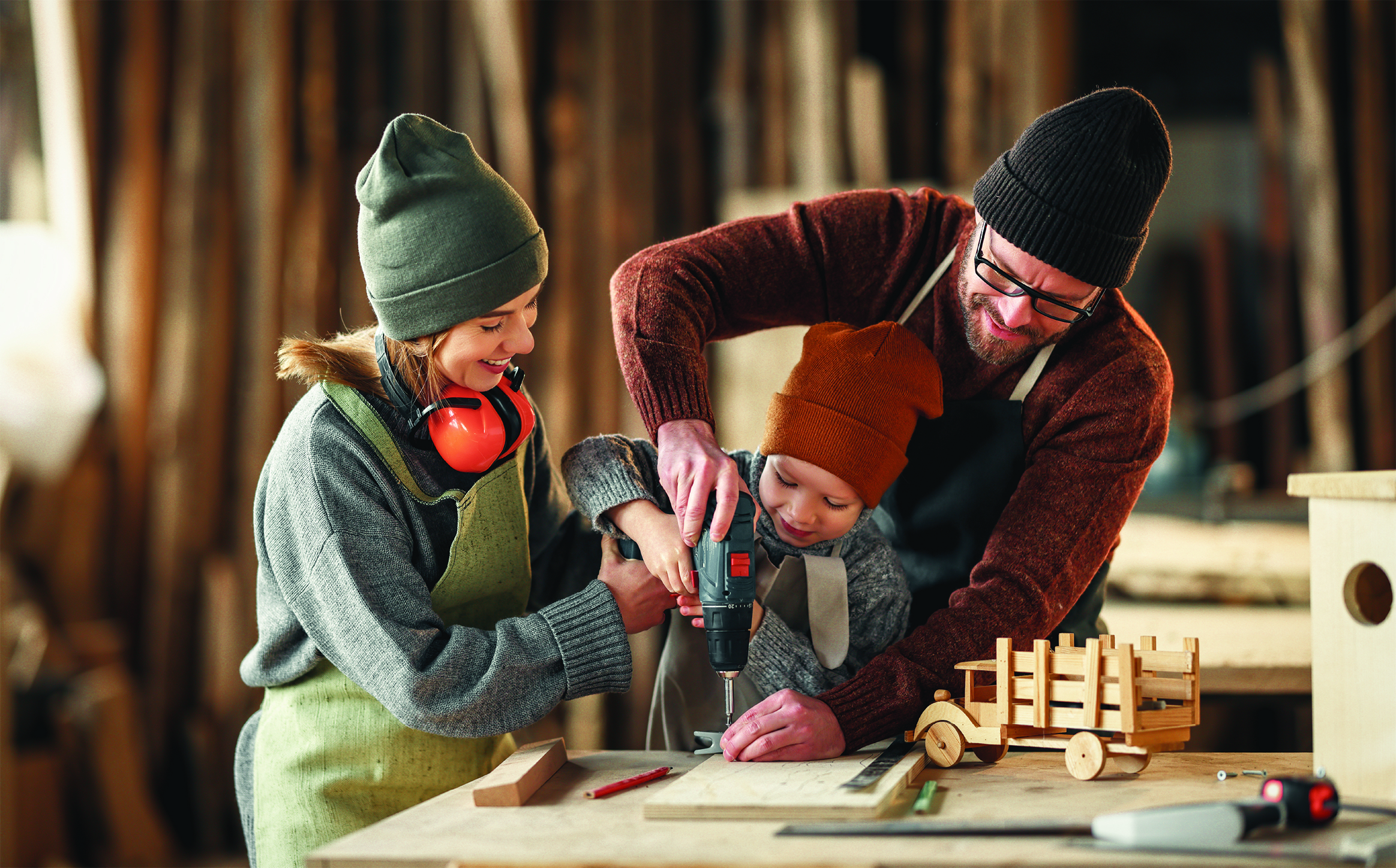 Figure 1: Patients often put their eyes at risk undertaking day-to-day activities such as DIY
Figure 1: Patients often put their eyes at risk undertaking day-to-day activities such as DIY
Research carried out in A&E departments suggests an approximate 50:50 split between patients experiencing workplace ocular trauma who were wearing protective eyewear and those who were not at the time of their injury. Of those that were injured despite wearing eye protection, the researchers suggest the principles causes are poor fitting appliances and inappropriate appliance selection both of which are prime responsibilities of dispensing opticians and optometrists.1
Somewhat surprisingly, the dispensing of safety spectacles is not restricted by the Opticians Act,2 though there is a strong argument that it should be given the harm that patients experience according to the research and the General Optical Council’s role in protecting and safeguarding patients. Prescription protective eyewear can be dispensed by anybody, not just by registered opticians, and a quick internet search reveals there are even online retailers involved in the supply. Nevertheless, there is great
potential for liability on the part of suppliers in the event of a sight-threatening or disfiguring injury and for this reason many practices have standard operating procedures that limit the dispensing of safety eyewear to qualified practitioners only.
It is therefore incumbent upon eye care professionals (ECPs) to conduct a thorough task analysis for their patients, including not only the standard questions about occupation and hobbies but also aspects of the patient’s lifestyle. Almost all people are involved in some form of activity that presents a risk to the eye and advice about eye protection and safety spectacles should be far higher on the agenda for most ECPs. Practitioners often include questions about work and hobbies within history and symptoms. However, household chores such as chopping wood, DIY, or cooking with hot oil can all cause ocular injury and rarely appear on patient records as a cause for concern and will not be considered by patients as suitable answers to a typical optometrist’s history and symptoms questions (figure 2).
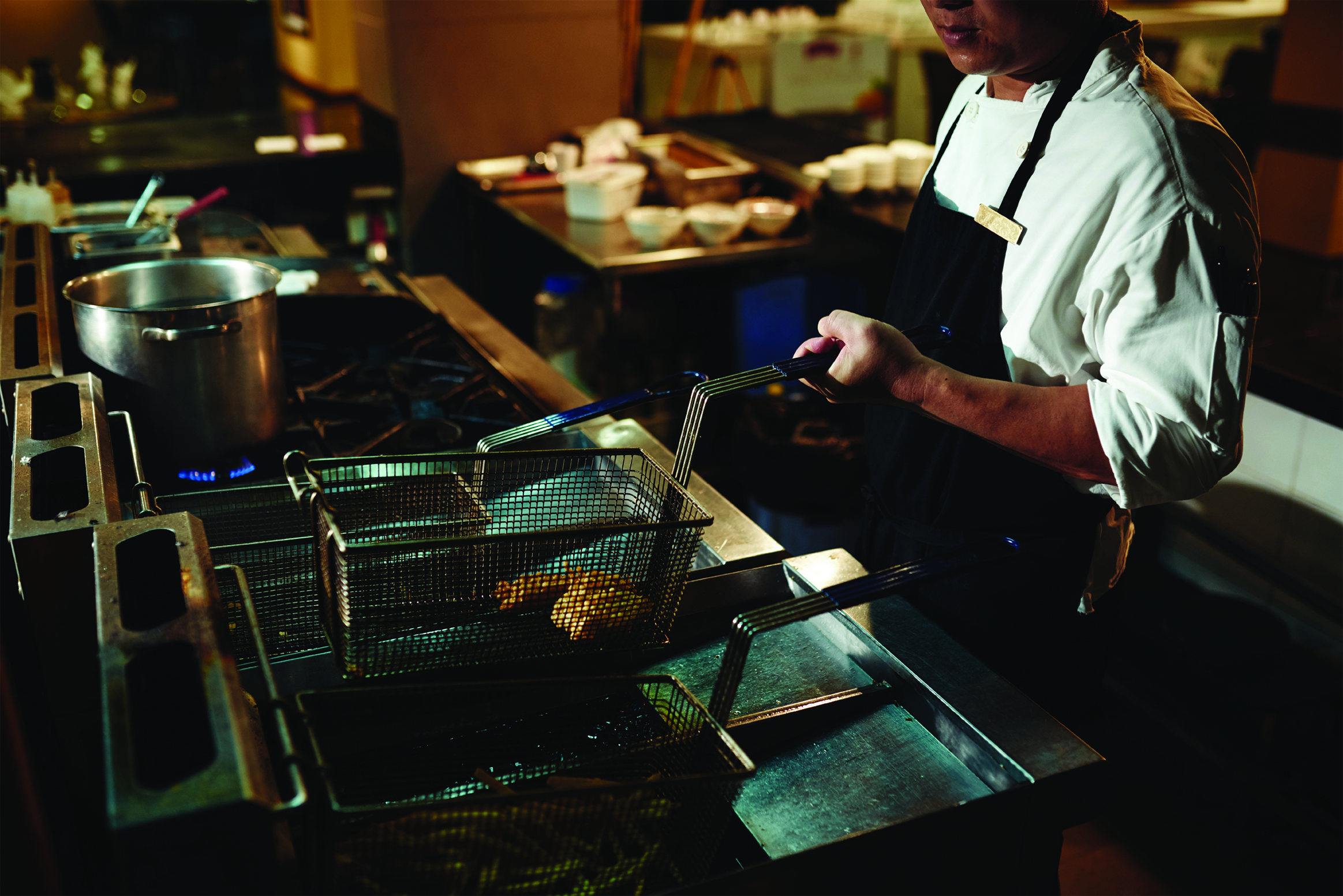 Figure 2: Practitioners need to identify a wide range of potentially hazardous activities, such as regular cooking with hot oil
Figure 2: Practitioners need to identify a wide range of potentially hazardous activities, such as regular cooking with hot oil
Whatever operating procedures practices adopt, they must ensure the advice they give is consistent with the relevant legislation relating to protective eyewear, namely the Personal Protective Equipment at Work Regulations 1992 (as amended),3 and that the devices they supply meet the relevant British and International Standards.
Occupational requirements are often fulfilled by health and safety officers within the workplace. They risk assess the occupational tasks of individual employees and issue safety spectacle forms which specify, or at least partially specify, the safety requirements for that individual employee (figure 3). Often there is a choice of frames, and the practice may carry samples for fitting purposes, other times the frame is specified by the safety officer. Lenses are often specified, or the level of impact resistance is specified, and it is left to the practitioner to decide on the actual material. The paperwork supplied by the patient from their employer is effectively an order form that the optician completes and sends off to the supplier typically receiving a fixed ‘safety spec fee’ for their services.
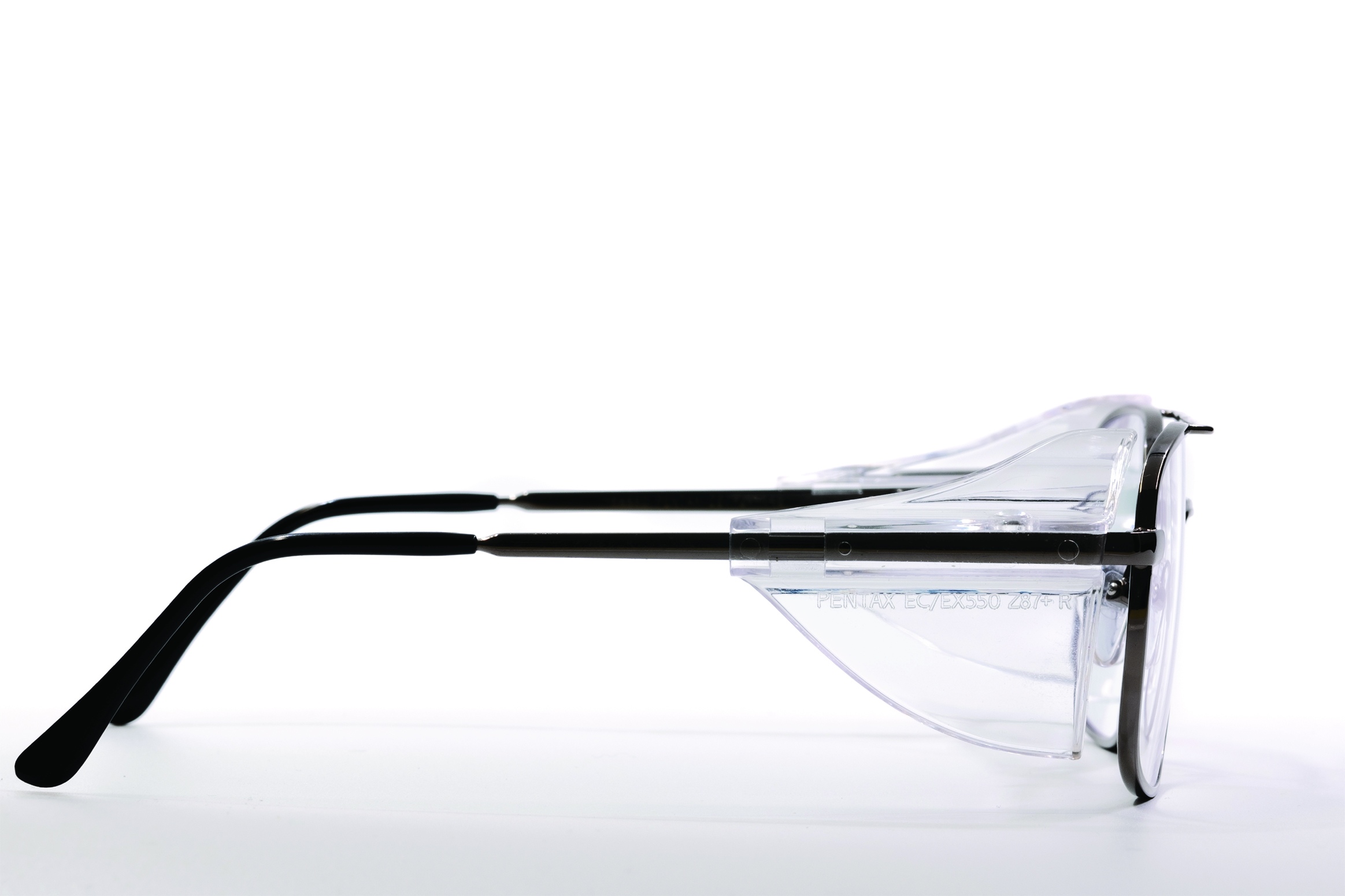 Figure 3: Example of safety spectacles
Figure 3: Example of safety spectacles
Additionally, the health and safety officer will have assessed additional non-prescription requirements in the workplace, which may be required in addition to prescription safety eyewear. This might include a need for eye/face protection, including worn protection such as face shields (figure 4), and guards and screens that are attached to machinery or stand between a machine and its operator.
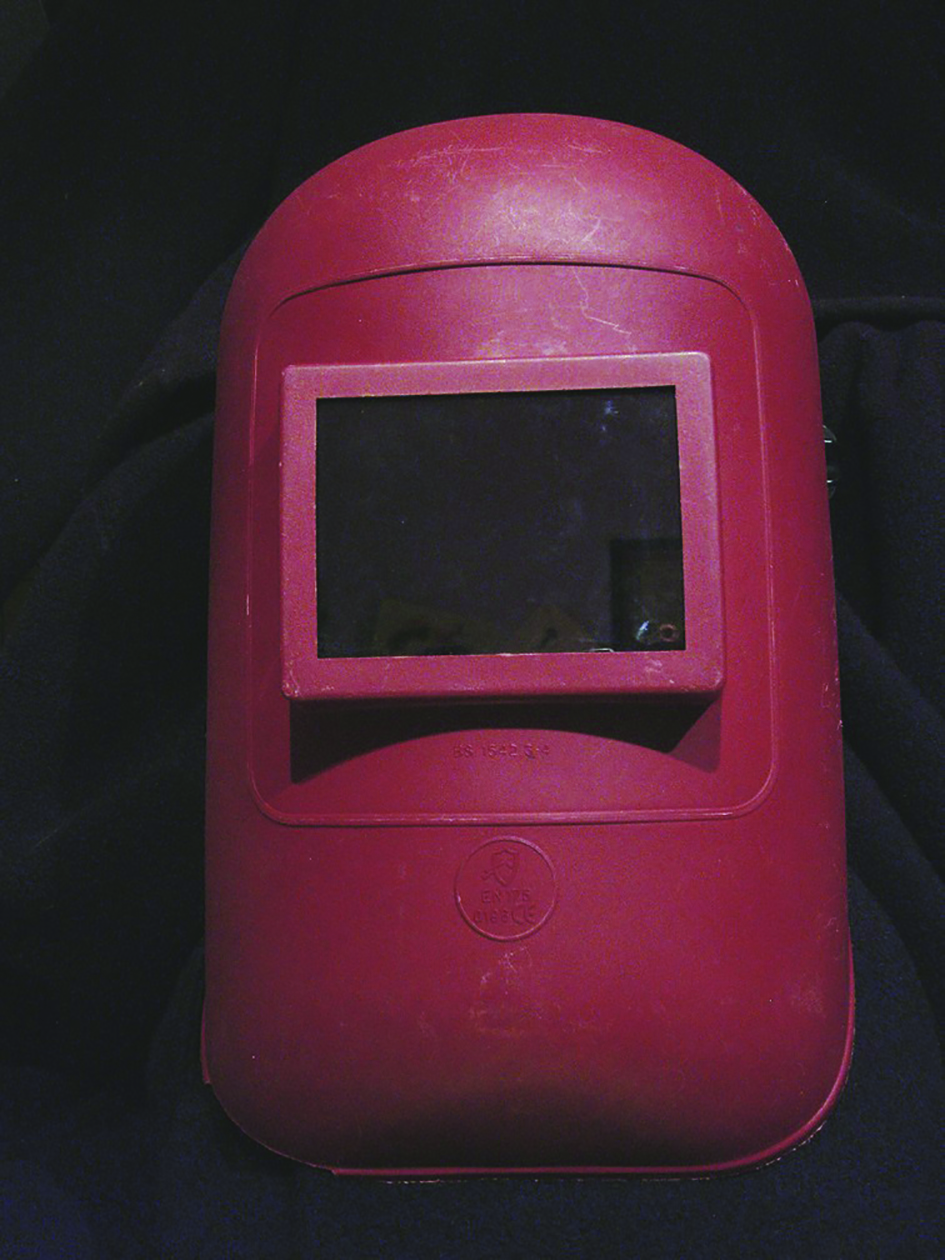 Figure 4: Example of a face shield
Figure 4: Example of a face shield
The situation is more complicated when the patient is self-employed or requires safety spectacles for non-occupational reasons. Practitioners must be able to adopt the role of safety officer and, in collaboration with the patient, make an assessment of the risk to the eyes and the patient’s eyesight from the tasks that they carry out and advise accordingly, using British Standards and the personal protective equipment (PPE) regulations as the basis for the advice.6-16
Personal Protective Equipment at Work Regulations 1992 (as amended)
Employers have a responsibility to protect their employees from the risk of injury in the workplace and are the prime audience for these regulations. However, they are also expected to be used by employees, their representatives, and others involved in the provision of PPE. Under the Health and Safety at Work Act 1974,4 employers have duties concerning the provision and use of PPE at work. They must meet the requirements of the Personal Protective Equipment at Work Regulations 1992 (as amended).
PPE is defined as ‘equipment that will protect the user against health or safety risks at work. It can include items such as safety helmets and hard hats, gloves, eye protection, high-visibility clothing, safety footwear and safety harnesses’ (figure 6). The regulations go on to explain that hearing protection and respiratory protective equipment provided for most work situations are not covered by these regulations because there are other more specific regulations that apply to them.
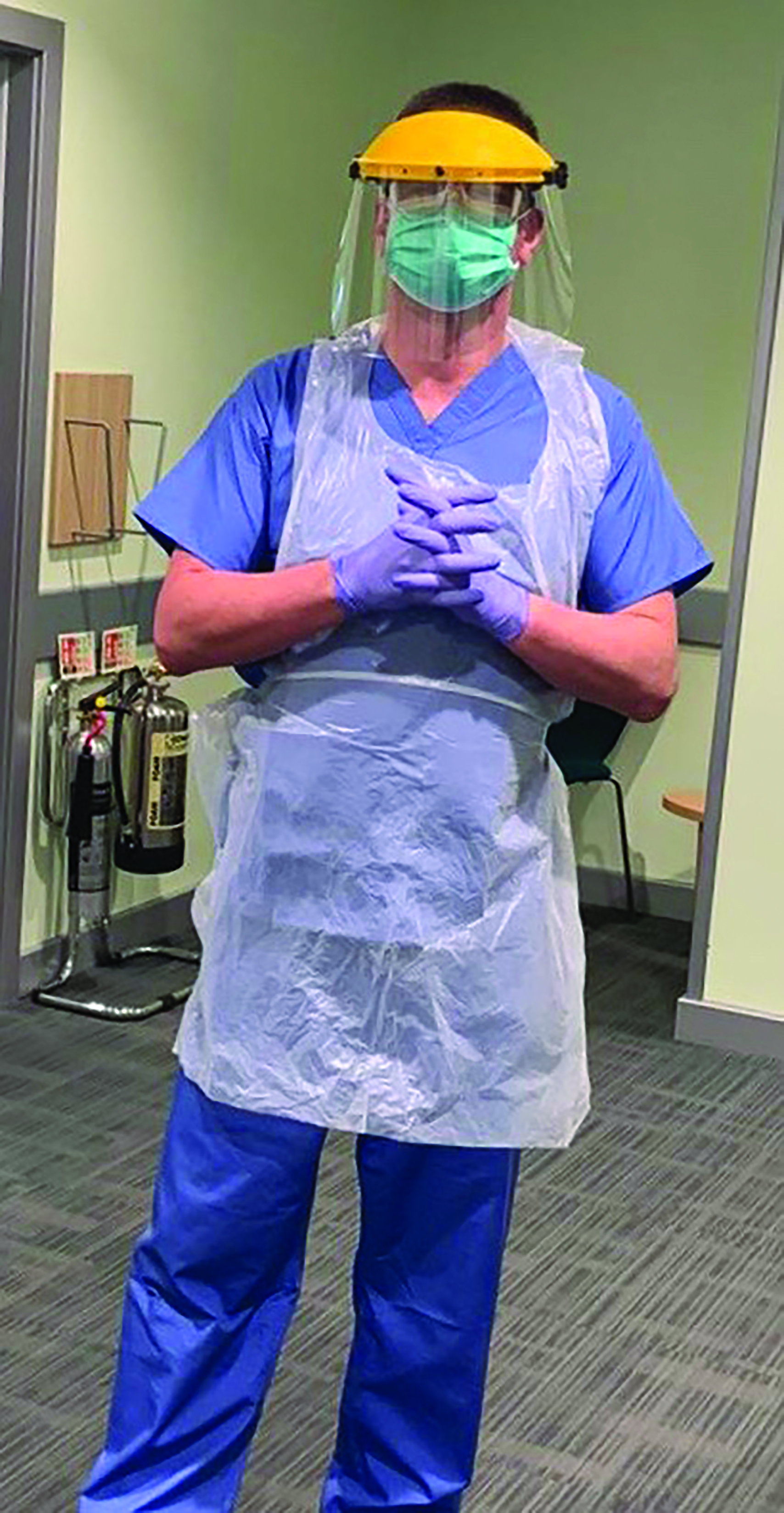
Figure 6: Personal protective equipment (PPE) used in eye care practice during the Covid-19 pandemic
However, these items need to be compatible with any other PPE provided and both hearing protection and respiratory protection equipment can both cause difficulties when combined with prescription protective eyewear, since both require an effective seal against the skin that can be difficult to achieve when spectacle frames are added to the mix.
Head protection can also interfere with the fitting of spectacles. Cycle helmets and crash helmets worn by employees on the roads are not covered by the regulations, though of course motorcycle helmets are legally required under road traffic legislation.
The regulations do not place an obligation on employers to provide PPE. Rather, they state that PPE should be used as a last resort if risks cannot be mitigated in other ways. However, employers must conduct risk assessments and, wherever there are risks to health and safety that cannot be adequately controlled in other ways, the Personal Protective Equipment at Work Regulations 1992 require PPE to be supplied.
The regulations also require that PPE is:
- Properly assessed before use to make sure it is fit for purpose
- Maintained and stored properly
- Provided with instructions on how to use it safely
- Used correctly by employees
When advising self-employed patients, or patients who require eye protection for non-occupational tasks, to make sure the right type of PPE is chosen, practitioners should consider the different hazards in the workplace and identify the PPE that will provide adequate protection against them; this may be different for each job.
If in doubt, ask your supplier for advice on the types of PPE available and their suitability for different tasks. Another useful source of information is the British Safety Industry Federation (www. bsif.co.uk). Consider the following when assessing suitability:
- Does the PPE protect the wearer from the risks and take account of the environmental conditions where the task is taking place? For example, eye protection designed to protect against agricultural pesticides may not offer adequate protection when using an angle grinder to cut steel or stone.
- Does using PPE increase the overall level of risk or add new risks, such as when making communication more difficult or making vision less clear through, for example, steaming up or attracting dust?
- Can it be adjusted to fit the wearer correctly? For example, are safety spectacles compatible with ear, head or face protection?
- What are the needs of the job and the demands it places on the wearer? For example, the length of time the PPE needs to be worn, the physical effort required to do the job or the requirements for visibility and communication. For example, anti-fog lenses may be required when close fitting safety spectacles or prescription goggles are used for strenuous activity such as forestry work, and metal mesh face shields may be preferable to polycarbonate.
- If someone wears more than one item of PPE, are they compatible? For example, does using a respirator make it difficult to fit eye protection properly?
Case study – chainsaw
A regular patient, Mr P, has moved from the town to the country and his new house includes wood burning stoves and has an adjoining small forest making the property self-sufficient in fuel wood. Mr P processes the wood himself and has recently had a near miss. He has decided that increasing his level of personal protective equipment beyond gloves and ear defenders would be prudent. A task analysis reveals Mr P uses the following:
- Chainsaw (petrol) to fell trees and cut trees into ‘rounds’ (large logs)
- Splitting maul (heavy axe) to split rounds into fire sized logs
- Metal wedges and a sledgehammer to split stubborn rounds
- Chop-saw (electric, indoor) to cut waste timber from building work for kindling
- Hand axe for splitting timber for kindling
Overall, without personal protective equipment, Mr P’s pastime is a very high-risk activity with multiple hazards that cause serious injury including splinters of wood, metal chips and out of control tools straying in the direction of the eye. Fortunately, chainsaw manufacturers are required to build in number of safety features one of which prevented serious injury during Mr P’s near miss. A key hazard with chainsaws, especially if used incorrectly, is for the tree/log being cut to shift and trap the chain. Under this circumstance rather than the chain spinning round the saw blade, the saw spins round the chain and can easily be forced out of the operator’s hands, or ‘kick back’ in the direction of the operator’s face/eyes. Chainsaws have a number of built-in safety devices to reduce injuries including automatic engine cut off if the power switch is let go, and a special ‘chain brake’ that is tripped if the leading hand is forced off the saw by kick back. Nevertheless, the following PPE is recommended (figure 7), and should be considered essential in occupational use:
- Chainsaw trousers and gloves (made with a special fabric that clogs the chain and causes it to stop quickly if cut)
- Steel toe-capped chainsaw boots
- Hard hat
- Ear protection – ear plugs and ear defenders
- Facial protection
- Eye protection
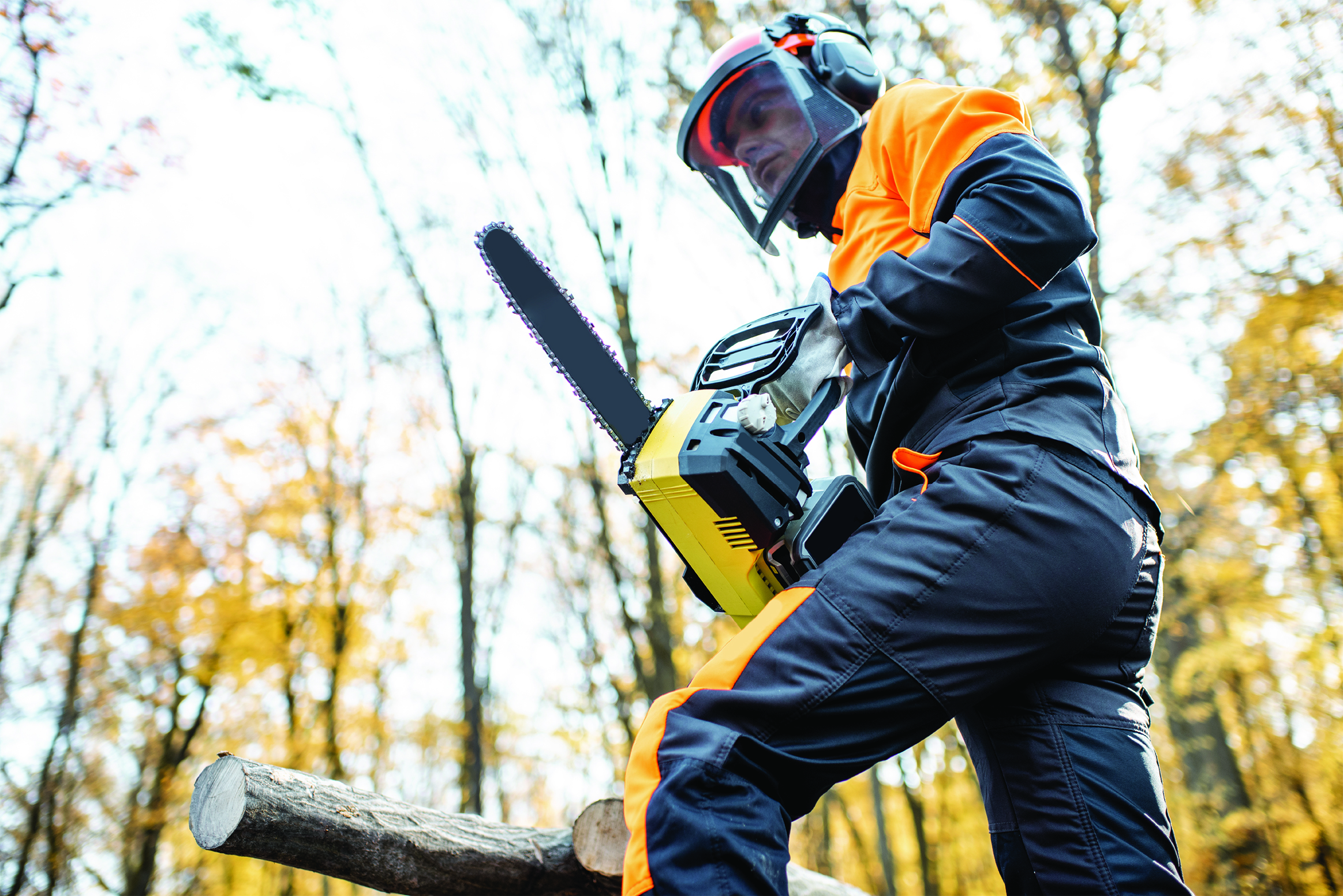 Figure 7: Safe use of a chainsaw
Figure 7: Safe use of a chainsaw
In discussion, it was decided that Mr P should first purchase his head, ear and face protection and then prescription eyewear could be recommended that would be compatible. A helmet with built in flip-up steel mesh face guard and built-in ear defenders was purchased. It could be argued that, with a face shield in place, prescription safety spectacles is unnecessary and everyday spectacles with plastic lenses would be sufficient, but this would be bad advice given the wear and tear they would be subjected to. Additionally, a further hazard is saw dust particles, especially in windy conditions, which can easily enter the eye and cause corneal abrasions. Mr P elected for a pair of Rx safety goggles (figure 8), with anti-fog lenses, which although ventilated offer an effective seal from airborne sawdust. An alternative would have been a close-fitting frame with side shields.
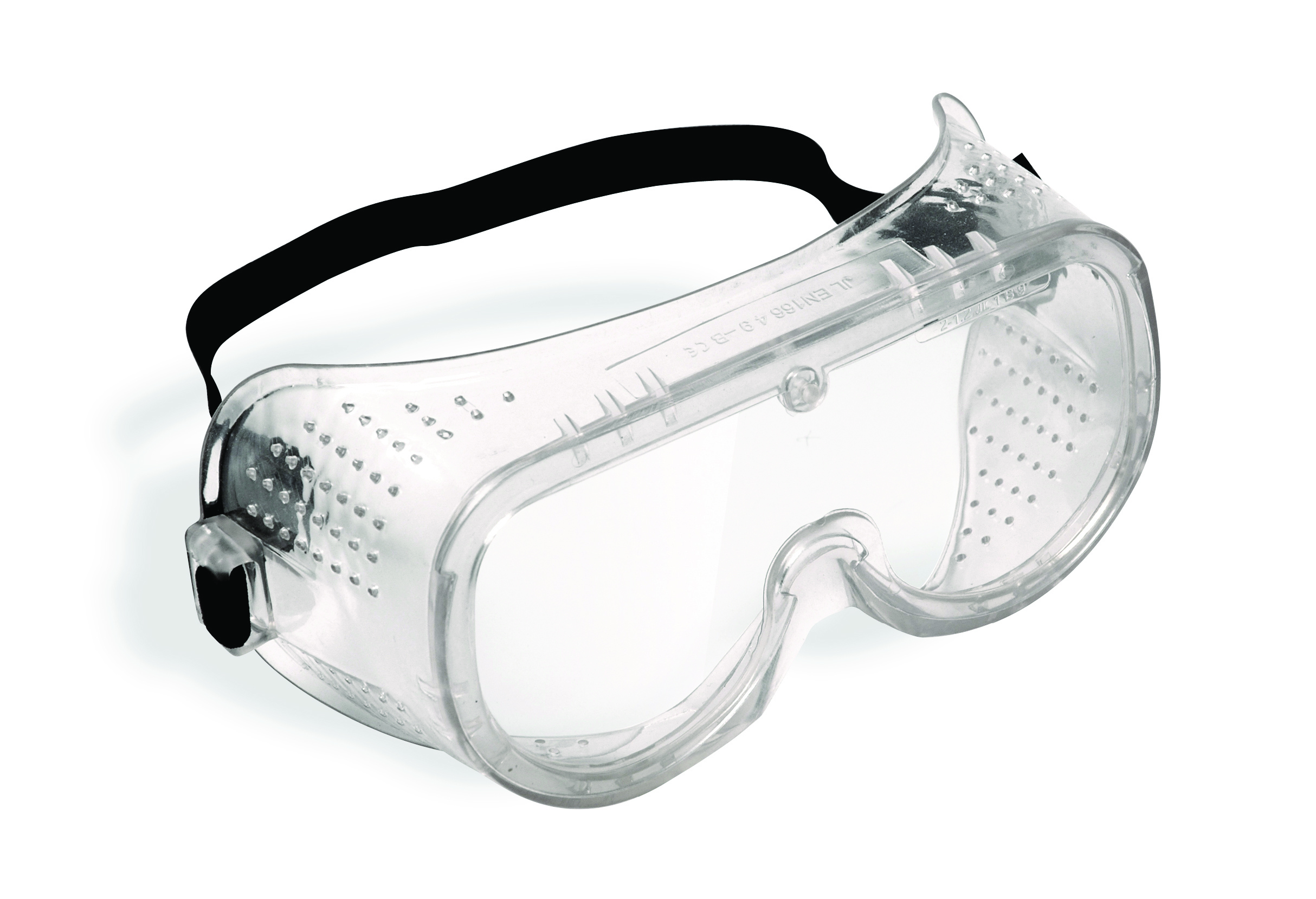 Figure 8: Safety goggles
Figure 8: Safety goggles
In the author’s personal experience when using table-top chop saws, the built-in polycarbonate guards are not sufficient and can be destroyed if an errant nail or screw is propelled into the guard by the rotating blade. A full-face guard or personal eye protection is still essential.
The regulations offer further sound advice to employers and users when selecting and using PPE:
- Choose good quality products that are CE marked in accordance with the Personal Protective Equipment Regulations 2002. Suppliers can advise you.
- Choose equipment that suits the wearer; consider the size, fit and weight; you may need to consider the health of the wearer. For example, if equipment is very heavy or wearers have pre-existing health issues, standard PPE may not be suitable.
- Let users help choose it; they will be more likely to use it.
A failure to use eye protection on the part of workers to whom it is made available, and poor fitting appliances being used by others, have been shown in research to contribute to the vast majority of eye injuries presenting at A&E.2 Clearly many people either do not see the benefit of eye protection or have a poor understanding of when and how to use it.
The regulations make employers responsible for ensuring when distributing PPE to employees that they:
- Instruct and train people how to use it
- Tell them why it is needed, when to use it and what its limitations are
- Never allow exemptions for those jobs that ‘only take a few minutes’
- If something changes on the job, check the PPE is still appropriate – speak with your supplier, explaining the job to them
- If in doubt, seek further advice from a specialist adviser.
When supplying PPE directly to self-employed workers, or for home use then these responsibilities must be assumed by the optician notwithstanding that as in the workplace the patient must also take responsibility for their own actions and well-being.
The regulations also identify the hazards and types of PPE and, although optical practitioners are unlikely to supply many of the options available for non-ocular protection to patients, it is useful to have context since patients appreciate all-round advice and it is important to consider the compatibility of eye protection with other PPE.
During the Covid-19 pandemic, eye care practices have seen how eyewear is often a real problem for patients who have to wear PPE, especially face masks and respirators. And, as employers, ECPs have also been responsible for providing large quantities of PPE to their own employees and must therefore understand the rules.
Eyes hazards: Chemical or metal splash, dust, projectiles, gas and vapour, radiation.
- Options: Safety spectacles, goggles, face-shields, visors.
- Note: Make sure the eye protection has the right combination of impact/dust/splash/molten metal eye protection for the task and fits the user properly.
Head hazards: Impact from falling or flying objects, risk of head bumping, hair entanglement.
- Options: A range of helmets, hard hats and bump caps.
- Note: Some safety helmets incorporate or can be fitted with specially-designed eye or hearing protection. Do not forget neck protection, eg scarves for use during welding. Do not use head protection if it is damaged. Replace it.
Breathing hazards: Dust, vapour, gas, oxygen-deficient atmospheres.
- Options: Disposable filtering face-piece or respirator, half or full-face respirators, air-fed helmets, breathing apparatus.
- Note: The right type of respirator filter must be used as each is effective for only a limited range of substances. Where there is a shortage of oxygen or any danger of losing consciousness due to exposure to high levels of harmful fumes, only use breathing apparatus. Never use a filtering cartridge. If advising a patient who uses respiratory protective equipment, look at HSE’s publication Respiratory protective equipment at work: A practical guide (see ‘Further reading’). Breathing apparatus and respirators may require facial seals to work effectively and protective eyewear can interfere with this – some are available with glazeable inserts. Alternatively, ‘respirator specs’ have extremely thin stainless steel sides that do not disrupt this seal.
Protecting the body hazards: Temperature extremes, adverse weather, chemical or metal splash, spray from pressure leaks or spray guns, impact or penetration, contaminated dust, excessive wear or entanglement of own clothing.
- Options: Conventional or disposable overalls, boiler suits, specialist protective clothing, eg chain-mail aprons, high-visibility clothing.
- Note: The choice of materials includes flame-retardant, anti-static, chain mail, chemically impermeable, and high-visibility. Do not forget other protection, like safety harnesses or life jackets.
Hands and arms hazards: abrasion, temperature extremes, cuts and punctures, impact, chemicals, electric shock, skin infection, disease or contamination.
- Options: Gloves, gauntlets, mitts, wrist-cuffs, armlets.
- Note: Avoid gloves when operating machines such as bench drills where the gloves could get caught. Some materials are quickly penetrated by chemicals so be careful when you are selecting them, see HSE’s skin at work website (www.hse.gov.uk/skin). Barrier creams are unreliable and are no substitute for proper PPE. Wearing gloves for long periods can make the skin hot and sweaty, leading to skin problems; using separate cotton inner gloves can help prevent this. Be aware that some people may be allergic to materials used in gloves, eg latex.
Feet and legs hazards: Wet, electrostatic build-up, slipping, cuts and punctures, falling objects, metal and chemical splash, abrasion.
- Options: Safety boots and shoes with protective toe caps and penetration-resistant mid-sole, gaiters, leggings, spats.
- Note: Footwear can have a variety of sole patterns and materials to help prevent slips in different conditions, including oil or chemical-resistant soles. It can also be anti-static, electrically conductive or thermally insulating. It is important that the appropriate footwear is selected for the risks identified.
Case study – Electrician
Mr L, a self-employed electrician had suffered horrific injuries while working on a contract. His metal safety spectacles, supplied when he worked in maintenance for a large manufacturing plant, contributed directly to his injuries. A high voltage electricity supply had arced across to Mr L’s metal safety spectacles causing severe facial burns and permanent and highly disfiguring scarring across the right side of his head and face. A nylon (polyamide) frame was subsequently supplied with single vision lenses.
Electricians and electrical engineers should not be supplied with metal frames, however nylon frames are frequently only available in larger sizes that are difficult if not impossible to adjust, or wrapped styles that may not be compatible with prescription requirements, so it may be necessary to recommend a cellulose acetate frame. Electricians can also take many other steps to minimise the risk of electric arc including for example insulated footwear and special plastic ladders that prevent electrical arc finding the quickest route to ground through the electrician’s body. The only eye protection certified as protecting against electrical arc short circuit are face shields specifically designed for the purpose and marked ‘8’ to the right of the code for impact resistance.
Training
- Make sure anyone using PPE is aware of why it is needed, when to use, repair or replace it, how to report it if there is a fault and its limitations.
- Train and instruct people how to use PPE properly and make sure they are doing this. Include managers and supervisors in the training, they may not need to use the equipment personally, but they do need to ensure their staff are using it correctly.
- It is important that users wear PPE all the time they are exposed to the risk. Never allow exemptions for those jobs which take ‘just a few minutes’.
- Check regularly that PPE is being used and investigate incidents where it is not. Safety signs can be useful reminders to wear PPE, make sure that staff understand these signs, what they mean and where they can get equipment, eg for visitors or contractors.
Maintenance
Make sure:
- Equipment is well looked after and properly stored when it is not being used, eg in a dry, clean cupboard, or for smaller items in a box or case
- Equipment is kept clean and in good repair – follow the manufacturer’s maintenance schedule (including recommended replacement periods and shelf lives)
- Simple maintenance can be carried out by the trained wearer, but more intricate repairs should only be done by specialists
- Replacement parts match the original, eg respirator filters
- You identify who is responsible for maintenance and how to do it
- Employees make proper use of PPE and report its loss or destruction or any fault in it
Case study – repairing safety spectacles
The College of Optometrists has no specific guidance on the supply of safety spectacles except to say under A319: ‘All spectacles or other optical appliances should be sold and supplied by, or under the supervision of, an optometrist or dispensing optician, even if an unregistered person could legally complete the sale without supervision. You should decide what is in the best interests of the patient.’
The Association of British Dispensing Opticians, however, say in advice and guidance C4.17.2: ‘Care must be taken when requests are made to repair safety spectacles. Once supplied and fitted, no repairs can be effected to an appliance without rendering the protection of the appliance, guaranteed by the manufacturer, null and void. Even the replacement of a screw could be seen as interfering with the original standards. Safety spectacles must be replaced if damaged in any way, to maintain the manufacturer’s guarantee and the patient’s ocular protection.’5
Yet elsewhere (https://www.abdo.org.uk/faqs-and-links-with-topics/safety-specs/U2.5.2 Safety specs (2014)), ABDO contradicts its own advice: ‘… If the worst happened and the appliance failed to protect the patient’s eyes, the member could be in danger of being sued, since the manufacturer would say that their terms and conditions had been breached. Personally, and it is for everyone to decide for themselves, I would take my chance in court. Your records would show what was done and why, and that everything possible was done to keep the patient safe in the given circumstances. And that is what good professional conduct is all about.’
On balance, these authors agree with the FAQ reply. The regulations call for specialists to carry out repairs, and if an ECP is not a specialist in the replacement of screws in spectacle frames, then who is? When affecting repairs registrants should carefully inspect the frame and lenses for damage, and ensure when replacing lens retaining screws that a thread-sealant is used, or that side screws are peened (riveted over) to ensure, as far as is possible, that the screw cannot quickly work lose again. It should not be possible to force the lens out of the frame to the rear, side shields must be firmly attached, and the lenses (or oculars as they are termed in the EN standards) should be undamaged. Where the appliances seem to be no longer fit for purpose, then this should be documented and the patient advised to obtain a new appliance or the appliance sent away for a repairs such as a replacement frame or replacement ocular(s).
Employers should make sure suitable replacement PPE is always readily available. It may be useful to have a supply of disposable PPE, such as for visitors who need protective clothing.
CE marking
Ensure any PPE you buy is ‘CE’ marked and complies with the requirements of the Personal Protective Equipment Regulations 2002. The CE marking signifies that the PPE satisfies certain basic safety requirements and, in some cases, will have been tested and certified by an independent body.6-16
Other regulations: The PPE at Work Regulations do not apply where the following five sets of regulations require the provision and use of PPE against these hazards. For example, gloves used to prevent dangerous chemicals penetrating the skin would be covered by the Control of Substances Hazardous to Health Regulations 2002 (as amended). The Regulations are:
- The Control of Lead at Work Regulations 2002
- The Ionising Radiations Regulations 2017
- The Control of Asbestos Regulations 2012
- The Control of Substances Hazardous to Health Regulations 2002 (as amended)
- The Control of Noise at Work Regulations 2005
ECPs are also employers themselves and must consider the health and safety of their employees and patients, especially infection control procedures that have been brought to the fore during the Covid-19 pandemic. As employers, or when advising small employers on protective eyewear, there are key points to remember about the 2002 PPE regulations are:
- Can the risk be controlled by means other than PPE? For example, a glazing machine can be purchased that will not operate unless guard screens are closed rendering protective eyewear unnecessary for its operation.
- If not, the employer must check that: suitable PPE is provided; it offers adequate protection for its intended use; those using it are adequately trained in its safe use; it is properly maintained and any defects are reported; it is returned to its proper storage after use.
One final question that might be asked is whether or not an employer can charge employees for PPE. An employer cannot ask for money from an employee for PPE, whether it is returnable or not. This includes agency workers, if they are legally regarded as employees. If employment has been terminated and the employee keeps the PPE without the employer’s permission, then, as long as it has been made clear in the contract of employment, the employer may be able to deduct the cost of the replacement from any wages owed.
Case study – hazardous activities in practice
In general terms, infection control aside, eye care practices are low risk environments. They do, however, present a number of hazards that could cause eye injury especially if the practice has an onsite glazing lab. Automatic and hand edgers, grinding and buffing machines, and tint baths should all be used with eye protection (figure 10); either prescription/plano safety eyewear or overspecs. Perhaps the greatest hazard is the cutting of metal with side cutters when shortening metal sides or screws. Observing students in exam conditions, it is rare for students to use the safety spectacles provided and often sides are cut in such a way to send the lose piece ‘pinging’ across the room in a way that could easily cause eye injury; this is an automatic fail in an exam situation. When shortening sides if safety spectacles are not worn, and even if they are, action should be taken to ensure the removed piece does not fly off causing an ocular hazard to others. This can be achieved by keeping hold of both sides of the cut, or by directing the cut piece into a cloth or bin.
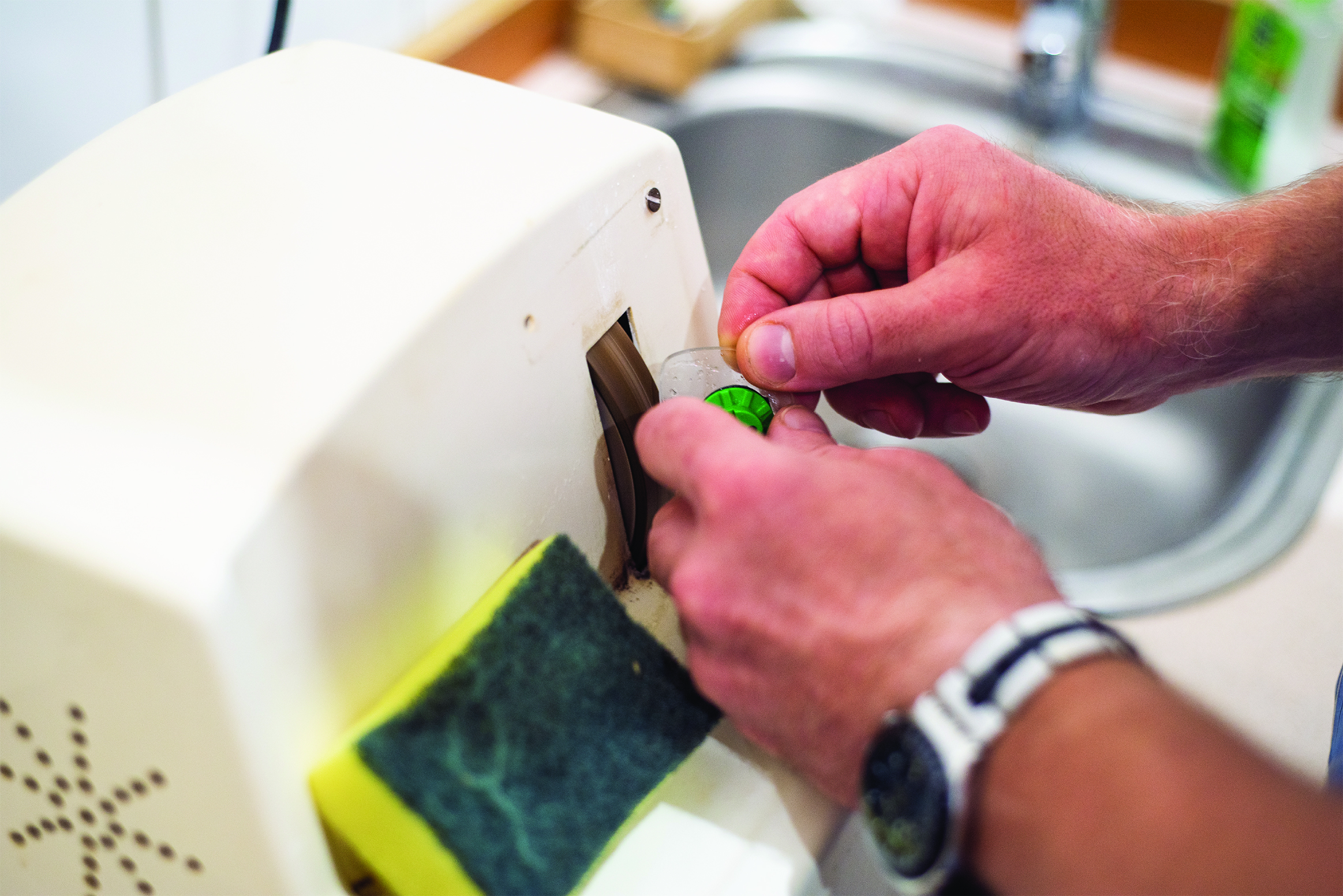 Figure 10: Many glazing and tinting tasks represent an ocular hazard
Figure 10: Many glazing and tinting tasks represent an ocular hazard
Observing, in passing, workers on building sites, shop-fits and roadworks, it is clear that many tradespeople do not take eye safety seriously and are often seen not to be wearing ocular PPE when using hazardous equipment such as angle grinders and power saws.
Peter Black MBA FBDO FEAOO is senior lecturer in ophthalmic dispensing at the University of Central Lancashire, Preston, and is a practical examiner, practice assessor, exam script marker and past president of the Association of British Dispensing Opticians. Tina Arbon Black BSc (Hons) FBDO CL is director of accredited CET provider Orbita Black Limited, an ABDO practical examiner, practice assessor and exam script marker, and a distance learning tutor for ABDO College.
- In part 2, we will take a closer look at the properties of safety appliances and their supply.
References
- Thompson A J, Mollan S P. Occupational eye injuries: a continuing problem. Occupational Medicine. 2009; 59: 123-125. Available from: https://academic.oup.com/occmed/article/59/2/123/1386426?login=true Accessed 4th August 2021.
- Opticians Act 1989. Available from: https://www.legislation.gov.uk/ukpga/1989/44/contents Accessed 4th August 2021.
- The Personal Protective equipment at Work Regulations 1992. Available from: https://www.legislation.gov.uk/uksi/1992/2966/contents/made Accessed 4th August 2021.
- Health and Safety at Work Act 1974. Available from: https://www.legislation.gov.uk/ukpga/1974/37/contents Accessed 4th August 2021.
- Association of British Dispensing Opticians. Advice and Guidelines C4.17.2. 2020 Available from: https://www.abdo.org.uk/regulation-and-policy/advice-and-guidelines/clinical/sale-and-supply-of-spectacles/ Accessed 4th august 2021.
- British Standards Institution. BS EN 166: 2002 Personal eye-protection-Specifications. London: BSI;2002.
- British Standards Institution. BS EN IS0 18526-1:2020: 2002 Personal eye-protection. Optical test methods. London: BSI;2002.
- British Standards Institution. BS EN 168: 2002 Personal eye-protection. Non-optical test methods. London: BSI;2002.
- British Standards Institution. BS EN 169: 2002 Personal eye-protection. Filters for welding and related techniques. Transmittance requirements and recommended use. London: BSI;2002.
- British Standards Institution. BS EN 170: 2002 Personal eye-protection. Ultraviolet filters. Transmittance requirements and recommended use. London: BSI;2002.
- British Standards Institution. BS EN 171: 2002 Personal eye-protection. Infrared filters. Transmittance requirements and recommended use. London: BSI;2002.
- British Standards Institution. BS EN 172: 1995 Specification for sunglare filter used in personal eye-protectors for individual use. London: BSI;1995.
- British Standards Institution. BS EN 174: 2001 Personal eye-protection. Ski goggles for down hill skiing London: BSI;2001.
- British Standards Institution. BS EN 207: 2017 – TC Personal eye-protection equipment. Filters and eye – protectors against laser radiation (laser eye-protectors). London: BSI;2020.
- British Standards Institution. BS EN 208: 2009 Eye-protection. Eye protectors for adjustment work on lasers and laser systems (laser adjustment eye-protectors). London: BSI;2005.
- British Standards Institution. BS EN 379:2003+A1:2009 Personal eye-protection. Automatic welding filters. London: BSI;2003.
